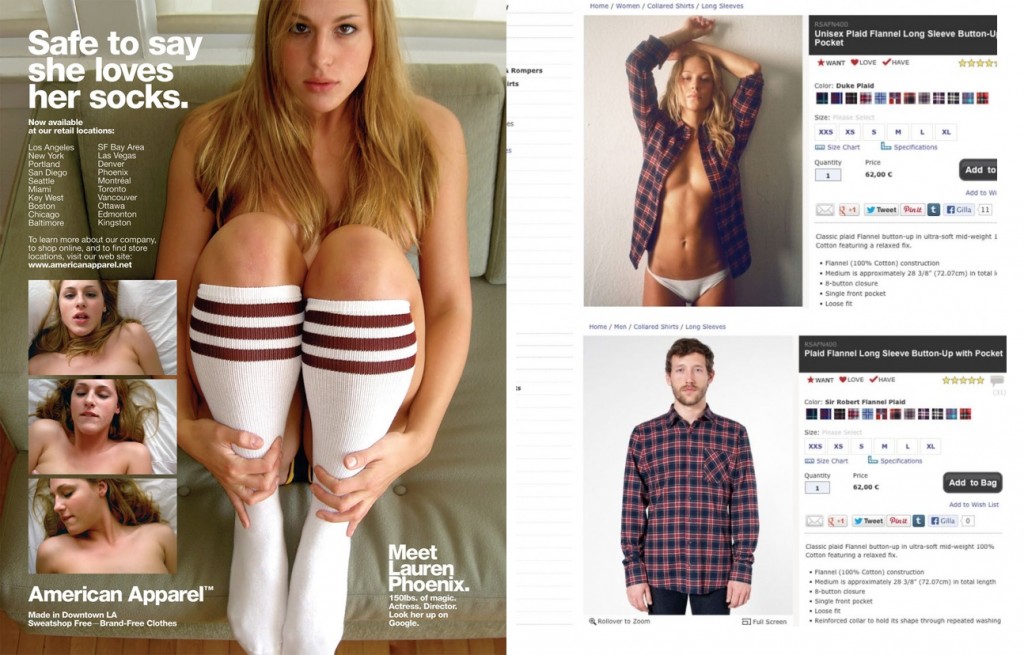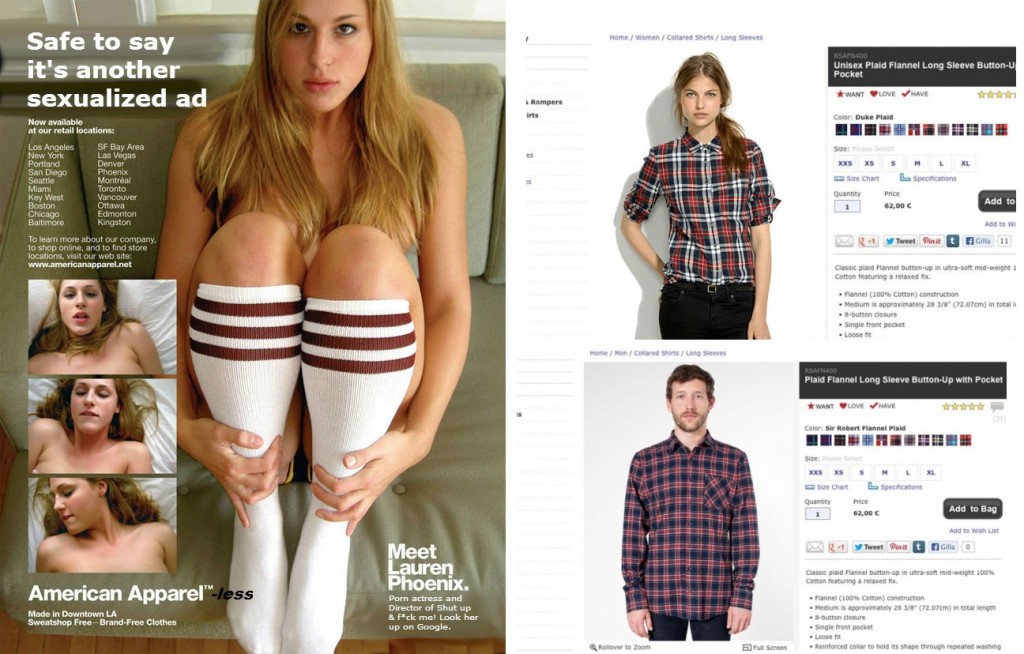
A large and popular American clothing manufacturer, American Apparel (AA), has integrated the importance of producing their own trendy clothes with fairly-paid garment workers into their brand image – Sweatshop free and made in the US. Despite these ethical claims, they continue to show provocative advertisements of young girls wearing their clothes unethically, or in other words, wearing little or no clothes at all. On the flip side, their male models are shown wearing the clothes modestly with no sexualisation and often obtaining the more dominant role in print ads- why is there such a big difference between how women and men are portrayed? AA sexualizes females in suggestive poses, as if saying females should be and act this way to get noticed by males (many of their ads are staged to seemingly showcase male fantasies, such as a female bending over in a skirt or spreading her legs). Because of these disturbing images, the UK has banned many of AA’s advertisements as it crosses the line into nudity and pornographic images. In fact, AA features a few pornographic female stars such as Lauren Phoenix, in their ads as a way to attract consumers through the idea of sex. In 2015, the now ex-CEO of AA, Dov Charney was allegedly involved with sexual activities with numerous models and employees of AA, as well as various accusations of verbal and physical abuse. Not only was the attention focused on their controversial ads, but problems with sexual exploitation within the company was brought to light.

For my cultural jamming, I simply replaced the words in the ad to speak the truth. American Apparel is advertising their female models in less clothing, giving rise to a new name for them- American Apparel-less. If you look at the three small image boxes on the left hand side of the first ad, my initial response what that it had nothing to do with selling garment, but rather selling the idea of ‘pleasure.’ This can give rise to other thoughts that this pleasure is not from the ‘loving the socks,’ but some other source. As well, the short introduction of who Lauren Phoenix is, has been modified to become more detailed as these small text boxes were initially depicting her bibliography in the original ad, except the only detail they revealed was her weight and her career as an actress and director were left mysterious for the consumers to discover themselves on Google. From the model, it is clear to see that she is barely wearing any clothes, despite a company that manufactures and sells clothing. This is one of the less provocative ads and there are many others that show females completely bare, vulnerable, and sexually positioned. Not only do these ads portray females as ‘pleasure’ objects to look at, there is a clear difference between the ads for men and women clothing. On the right, I have replaced the imaged from a sexualized female to the way their unisex plaid shirt was dressed on the male. I believe there is no reason why a male can be advertised modestly while a woman has to be shown in little or no clothes at all. This reveals that females are still seen as objects and cater to men’s fantasies, which calls for much needed rethinking.